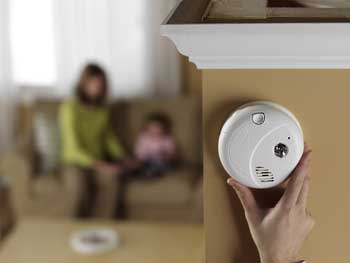
First Alert’s photoelectric smoke alarm will light a room or hallway during a fire emergency. There's also a mute button to hush nuisance alarms.
The latter might be the best option given that the NFPA recommends having a smoke alarm in each bedroom, one outside each sleeping space and on every level of the home. In a two-level house with three bedrooms, if you bought one of each alarm type, you'd be buying 12 alarms. That's a lot of alarms. In the name of defending your home and family, there's probably no danger in being overprotective. However, recent studies have shown you might be better off with just a photoelectric alarm. The reason for this isn't because ionization alarms don't work. They do. But they tend to be more prone to nuisance alarms, which is when an alarm is set off by normal cooking activities or burning a Pop Tart in the toaster because it's so sensitive to minute smoke particles. "What these studies are showing is that people are taking these alarms down and the batteries out, leaving their home unprotected," says Tom Russo, brand manager at First Alert, a smoke alarm manufacturer. According to Tom, market retailers are switching over to photoelectric smoke alarms and states are requiring photoelectric over ionization. But, even using an ionization alarm is better than nothing, he says. Other options are installing only a photoelectric alarm near the kitchen, or investing in ionization alarms with a hush feature. Whatever alarm type and sensor you choose, consider an interconnected system, so if an alarm goes off in one part of your home, they all go off. And in the case of fire, the earlier the warning, the better.





